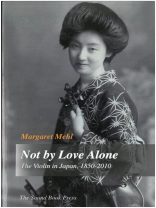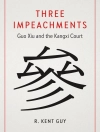Suzuki Shin’ichi, the Tokyo String Quartet, Midori – How did Japanese violinists manage to revolutionize violin teaching, win international competitions, conquer Western concert stages, study at world-famous conservatories and take up positions in leading orchestras and prestigious music faculties? What enabled the Japanese to master Western classical music within a few decades? What are the true origins of the Suzuki Method? What has the triumph of Western classical music meant for the traditional music of Japan?
Not by Love Alone is the first cultural history of the violin and violin playing, and indeed the first comprehensive history of Western music in general, in Japan from the mid-nineteenth century to the present in the context of Japan’s emergence as a modern nation and a major global power.
Table des matières
Prologue and Introduction • Part 1: Confrontation with the West: The Modernization of Japan and the Role of Music from the Mid-nineteenth Century to the End of the First World War: Early Evidence of the Violin in Japan – Foreign Teachers – Pioneering Sisters – The first Japanese-Made Violins and the Rise of Suzuki Violins – Early Students of Western Music – The Early Twentieth-Century Violin Boom • Part 2: Japan’s Emergence as a Musical Power: From the End of the First World War to the Bubble Economy: I. Joining the World (1918–45): Visiting Superstars and European Refugees – The Rise of the Symphony Orchestra – New Opportunities for Violinists – The Making of Two Teachers: Suzuki Shin’ichi and Sumi Saburô – The First Home-Grown Child Prodigies – Two Japanese Violinists in Nazi Germany: II. Recovery, Economic Growth and Cultural Ambitions (1945–1980s): The Post-war Violin Boom – Triumph and Tragedy Abroad – Unprecedented Opportunities – From “Talent Education” to the “Suzuki Method”: The Japanese Violin Goes Global – The Legend from Japan: Midori – Costs and Corruption • Part 3: At the Turn of the Millennium: With Stories Attached – Violin Mums Speak Out – In the Shadow of Cremona and Xiqiao – Music for Love: Chamber Music – Serious about Music: Amateurs – “Never Too Late” • Conclusion: Going Native, Going Global: the Violin as Part of Japanese Culture












